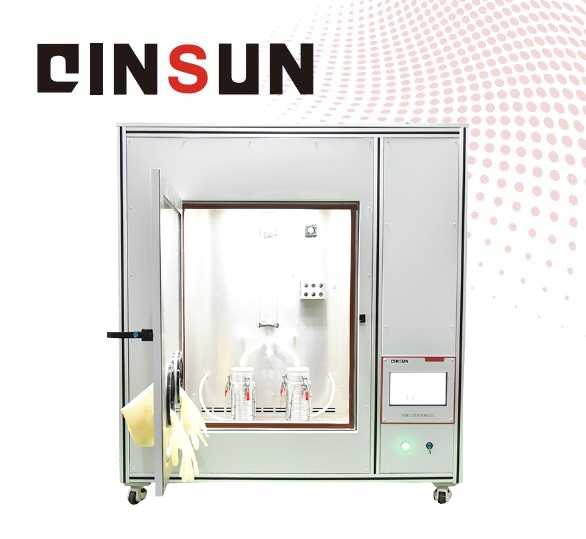Can printed and dyed masks be used with confidence? Are children's masks reliable? How protective are medical masks? These problems can be solved by mask testing. The masks purchased by consumers through formal channels have been tested by authoritative institutions, so they can be purchased with confidence. Masks are divided into medical masks, non-medical masks, civilian sanitary masks, etc. Zhongke Testing has CMA&CNAS qualifications for various mask testing, and the laboratory has full testing capabilities for mask testing, and can compile mask testing reports.
Mask detection range
Zhongke testing masks include: non-woven masks, polymer masks, activated carbon masks, disposable masks, medical protective masks, medical surgical masks, general medical masks, industrial dust masks, and civilian protective masks.
Mask testing items
Chemical indicators: formaldehyde content, pH value, decomposable carcinogenic aromatic amine dye content, ethylene oxide residue
Physical indicators: basic requirement inspection, appearance requirement inspection, tightness, structure and size, nose clip, filtration efficiency, visual field, protective effect, particle filtration efficiency (PFE), airflow resistance measurement, flame retardant performance, dead space, air tightness resistance, inhalation resistance, exhalation resistance, synthetic blood penetration test, surface moisture resistance test, color fastness to rubbing, breaking strength of mask belt and the connection between the mask belt and the mask body, fastness of exhalation valve cover, exhalation Air valve guards, headbands, connections and connecting parts
Microbial indicators: bacterial filtration efficiency (BFE), microbiological indicators (coliform bacteria, total number of fungal colonies, total number of bacterial colonies, pathogenic purulent bacteria), sterility inspection
Heavy metal indicators: arsenic, cadmium, cobalt, chromium, copper, nickel, lead, antimony
Toxicological indicators: toxicological skin irritation, cytotoxicity, delayed hypersensitivity reaction
Mask testing standards and corresponding testing items
Daily protective masks
Testing Standard: GB/T 32610-2016 Technical Specifications for Daily Protective Masks
Test items: Appearance requirements, color fastness to rubbing, formaldehyde content, pH value, decomposable carcinogenic aromatic amine dyes, ethylene oxide residues, exhalation resistance and exhalation resistance, mask belt and the connection between the mask belt and the mask body breaking strength, exhalation valve cover fastness, microbial indicators, field of view under the mask, filtration effect (saline medium), filtration effect (oily medium), protective effect
Disposable medical mask
Testing standard: YY/T 0969-2013 Disposable medical masks
Test items: appearance, structure and size, nose clip, mask belt, bacterial filtration efficiency (BFE), ventilation resistance, microbial indicators (non-sterile), microbial indicators (sterilized), ethylene oxide residue, cells Toxicity, skin irritation, delayed type hypersensitivity
Disposable medical surgical mask
Testing Standard: YY0469-2011 Medical Surgical Mask
Test items: appearance, structure and size, nose clip, mask belt, synthetic blood penetration, bacterial filtration efficiency (BFE), particulate filtration efficiency (salt particulate matter), pressure difference, flame retardant performance, microbial indicators, ethylene oxide Residue, cytotoxicity, skin irritation, delayed type hypersensitivity
Testing standard: EN 14683: 2019 EU testing standard for medical masks
Test items: material and structure, design, bacterial filtration efficiency, air permeability (pressure difference), anti-synthetic blood penetration, microbial cleanliness (biological barrier), biocompatibility (cytotoxicity, skin irritation, hypersensitivity)
medical protective mask
Testing standard: GB 19083-2010 Technical requirements for medical protective masks
Test items: basic requirements of masks, nose clips, mask belts, filtration efficiency, airflow resistance, surface moisture resistance, synthetic blood penetration, microbial indicators, ethylene oxide residues, flame retardant performance, adhesion
KN95 mask
Testing standard: EN 149:2001+A1:2009 protective mask
Test items: visual inspection, material, practical performance, connection and connection parts, leakage, (PFE) penetration rate, salt, oil, flammability, headgear, breathing resistance, visual field, carbon dioxide concentration in inhaled air, skin Compatibility, Cleaning and Disinfection
Mask & Protective Clothing Tester detection process:
1. Project application - submit a mask standard test application to the testing engineer of Zhongke.
2. Data preparation - According to the mask testing requirements, the company prepares relevant test documents.
3. Mask testing - The company sends the samples to be tested to the mask testing laboratory for testing.
4. Prepare report - the engineer prepares the report according to the test data.
5. Report review - the engineer will review the complete report and issue a report.
6. Mailing - report mailing companies.
ps: (WLJCDM809)
https://www.qinsun-lab.com/986.html




评论
发表评论